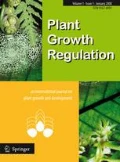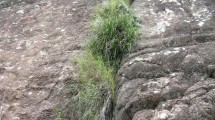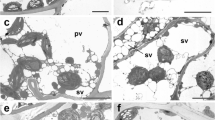Abstract
Xerophyta humilis (Bak.) Dur. and Schinz is a poikilochlorophyllous resurrection plant in that it is tolerant of considerable water loss (< 5% relative water content [RWC]) and thylakoid membranes are dismantled and chlorophyll is lost during dehydration. In this paper we examined the processes associated with recovery from desiccation upon rehydration. Dried leaf explants were rehydrated in water (control) or in solutions of actinomycin-D or cyclohexamide in order to determine to what extent initial recovery was dependant on de novo transcription and translation respectively. Our results suggest that considerable protection of subcellular organisation and components of metabolism occurs during drying such that the initial recovery of metabolism on rehydration is virtually independent of de novo transcription of nuclear genes. However recovery does require the synthesis of new proteins. The plasmalemma remains intact and macromolecular synthesis is not required for maintenance of its integrity. Messenger RNA's for chlorophyll biosynthesis appear to be stored in a stable form in the dried leaves and are translated on rehydration. Similarly most of the mRNA's necessary for recovery of electron transport in the chloroplast (as determined by measuring the quantum efficiency of photosystem II [FV/FM] using chlorophyll fluorescence) appear to be stabily present in the dried leaves. However, for total recovery of FV/FM new genomic transcription is necessary.
Similar content being viewed by others
References
Bewley JD and Oliver MJ (1992) Desiccation-tolerance in vegetative plant tissues and seeds: Protein synthesis in relation to desiccation and a potential role for protection and repair mechanisms. In GN Somero, Osmond CB and Bolis CL (eds) Water and Life: a comparative analysis of water relationships at the organismic, cellular and molecular levels, pp 141-160. Springer-Verlag
Bonhert HJ, Nelson DE and Jensen RG (1995) Adaptations to environmental stresses. The Plant Cell 7: 1099-1111
Gaff DF (1971) Desiccation tolerant flowering plants in southern Africa. Science 174: 1033-1034
Greenway SC, Strangeway GM, Grierson D and Bryant JA (1986) Long-lived messenger RNA and its relationship to protein synthesis during germination of pea (Pisum sativum L.) Seeds. Annals of Botany 57: 771-781
Hallam ND and Gaff DF (1978) Re-organization of fine structure during rehydration of desiccated leaves of Xerophyta villosa. New Phytologist 81: 349-355
Ingram J and Bartels D (1996) Themolecular basis of dehydration tolerance in plants. Annual Review of Plant Physiology and Plant Molecular Biology 47: 377-403
Koster KL and Leopold AC (1988) Sugars and desiccation tolerance in seeds. Plant Physiology 88: 829-832
Lichtenthaler HK (1987) Chlorophylls and carotenoids, the pigments of the photosynthetic biomembranes. Methods in Enzymology 148: 350-382
Oliver MJ and Bewley JD (1997) Desiccation-tolerance of plant tissues: a mechanistic overview. Horticultural reviews 18: 171-213
Sherwin HW and Farrant JM (1996) Differences in rehydration of three desiccation-tolerant angiosperm species. Annals of Botany 78: 703-710
Sherwin HW and Farrant JM (1997) Protection mechanisms against excess light in the resurrection plants Craterostigma wilmsii and Xerophyta viscosa. Plant Growth Regulation (This issue)
Stewart GR (1990) Desiccation injury, anhydrobiosis and survival. In Jones GG, Flowers TJ, Jones MB (eds) Plants under stress: biochemistry, physiology and ecology and their application to plant improvement, pp 115-130. Cambridge: Cambridge University Press
Tuba Z, Lichtenthaler HK, Maroti I and Csintalan Z (1993) Resynthesis of thylakoids and functional chloroplasts in the desiccated leaves of the poikilochlorophyllous plant Xerophyta scabrida upon rehydration. Journal of Plant Physiology 142: 742-748
Vertucci CW and Farrant JM (1995) Acquisition and loss of desiccation tolerance. In Kigel J, and Galilli G (eds) Seed Development and Germination, pp 237-271. New York: Marcel Dekker
Williams RJ and Leopold AC (1989) The glassy state in corn embryos. Plant Physiology 89: 977-981
Author information
Authors and Affiliations
Rights and permissions
About this article
Cite this article
Dace, H., Sherwin, H.W., Illing, N. et al. Use of metabolic inhibitors to elucidate mechanisms of recovery from desiccation stress in the resurrection plant Xerophyta humilis. Plant Growth Regulation 24, 171–177 (1998). https://doi.org/10.1023/A:1005883907800
Issue Date:
DOI: https://doi.org/10.1023/A:1005883907800




